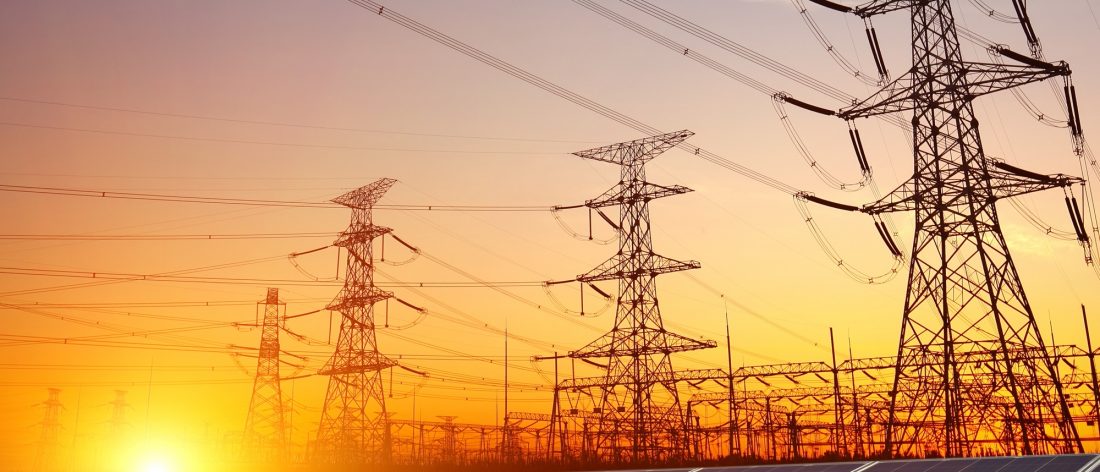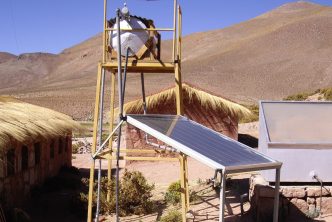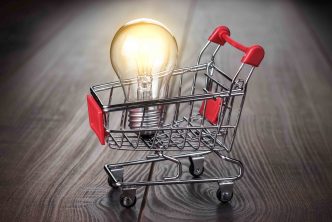Restrategizing to improve the contribution of alternative sources.
The Azura-Edo Independent Power Plant (IPP) success encouraged the initiation of fourteen solar IPP projects, but as developers were unable to attract necessary financing, these projects were halted.
By Jim Howlett
Introduction
In July 2016, the Nigerian Bulk Electricity Trading Company (NBET) signed Power Purchase Agreements (PPAs) with fourteen Independent Power Producers (IPP’s) for the development and commissioning of utility-scale solar power projects across Nigeria. These solar farms were to be located in the northern part of the country and had been under development for several years. They were all located a long way from the gas supply pipelines in the south, which at the time were being disrupted due to an insurgency, leading to disruption in gas supplies and having a significant impact on the ability of gas power plants to generate power. The oil production levels were also severely affected, impacting hard currency revenues and putting foreign exchange rates under pressure with a growing disparity between the official CBN rate and that offered on the parallel market. Businesses and households were having to run generators for longer periods than usual, and every day there were long queues at petrol filling stations.
In mid-2016, the fourteen solar projects would have looked very attractive to the Government; a solution to the troubled gas supply pipelines, ability to diversify power generating capacity which was reliant on gas (combined they offered 1200MW in generating capacity), and opportunity to start developing the solar industry in Nigeria which had started to gather momentum in other countries of Africa. Many major development finance institutions, including the IFC, the African Development Bank, FMO, CDC, KfW, Proparco, and others, were keen to provide financing to these solar projects that had negotiated a PPA tariff of $0.11/kWh.
But nearly five years later, none of these solar IPPs has reached financial close, and the country remains without any on-grid solar projects. Why have these projects stalled? What are the lessons, and can Nigeria realize on-grid power plants?
The solar IPP’s were unable to reach financial close due to the inability to obtain the required guarantees, such as a Partial Risk Guarantee (PRG) and a Put Call Option Agreement (PCOA); without these key agreements, the developers were unable to attract the necessary financing. In the absence of a sovereign guarantee, as in the case for infrastructure projects in Nigeria, the PRG is obtained from a Financial Development Institution (such as the World Bank or the African Development Bank) and guarantees payment to the Generating Company (a GenCo) from NBET for a short period (usually three to six months). The other instrument required for these projects to reach financial close was a Put Call Option Agreement (PCOA) which in simple terms is an agreement between the Government and a developer for compensation if the Government takes control of the asset (solar project). The PCOA was triggered under a particular set of circumstances resulting from either the Government or the Developer’s actions.
Prior to signing the PPA’s for the fourteen solar IPP projects, the Azura-Edo Independent Power Plant (IPP) had reached financial close in late 2015. This was a 459MW gas-fired, open-cycle power plant and required financing of about US$900 million; it was the first wholly project-financed IPP in Nigeria. The Buhari administration signed the World Bank Partial Risk Guarantee (PRG) and the Put Call Option Agreement (PCOA) to support the project. This action enabled the project to reach financial close in December 2015, while construction started one month later.
The Azura-Edo power project deal was a significant win for the Buhari administration; it became heralded as the flagship IPP project that would pave the way for thousands of megawatts to add to the grid in the coming years. The project’s finance came from fifteen financial institutions from nine countries and included prominent financial development institutions (FDI’s) and international commercial banks. This transaction was to provide a template to other IPP’s in Nigeria and act as the catalyst for other IPP power projects to reach a financial close. The Azura-Edo project was closed in 2015, and the solar PPA’s signed in July 2016. Given the Azura-Edo IPP project’s success, why were the solar IPP’s not able to progress further than they did?
The Azura-Edo IPP was an essential milestone for Nigeria; there were still several significant challenges and issues that the power sector was working through due to the privatization of the power sector that concluded in 2014. Any power sector privatization process will generate challenges and issues that will need to be solved over time as lessons are learned and applied. The privatization of the Nigerian power sector was both ambitious and completed over a short period.
By mid-2016, the insurgency’s effects in the south of the country were having major impacts on the country’s macro-economic situation, which also affected the power sector’s liquidity. Oil production levels had fallen, putting pressure on US dollar availability affecting the foreign exchange rate, which was evident through a growing disparity between the official CBN rate offered and the parallel market. In June 2016, the CBN adjusted the NGN: USD exchange rate from N200:USD to N280:USD. This adjustment to the Naira’s value posed a significant challenge to the Nigerian Energy Supply Industry (NESI), particularly those that had invested in the Distribution Companies (DisCo’s), which borrowed US dollars to pay for the assets but were collecting payments in Naira. The challenge of moving to a more cost-reflective electricity tariff was proving particularly acute, placing DisCo’s, NBET, GenCo’s, and gas suppliers under different degrees of financial stress.
This situation was unsustainable, with the priority becoming to develop a holistic approach to address these significant challenges that were presenting themselves across the entire value chain of the sector. The CBN developed a Payment Assurance Facility to improve the liquidity for the upstream sector. But this still left major challenges for those downstream stakeholders with aggregate, technical, commercial, and collection (ATC&C) losses that need to be addressed. In this context, the Government developed the Power Sector Recovery Program (PSRP), funded by the World Bank through a $750m credit facility that would improve the reliability of electricity supply, achieve financial and fiscal sustainability, and enhance accountability in the power sector.
This environment made it significantly more challenging for the solar IPP’s to obtain the required guarantees to reach financial close. It was quite a different climate than that of 2015 when the Azra-Edo deal had closed. The DFIs’ that would supply instruments such as the PRG wanted to see improvements implemented in the power sector before enabling more megawatts added to the grid.
In the absence of PRG’s, the private sector and NESI stakeholders have continued to work on innovative financing models to improve the country’s on-grid power sector situation; this has included ‘willing buyer willing seller’ and ’embedded generation’ arrangements, amongst others. Developers also started to look at a franchise-type model, an arrangement between a private sector developer and a DisCo that sees a defined geographic catchment carved out from the DisCo for a fee, with the Developer agreeing to supply customers in that catchment with electricity and collecting the payments. The Developer agrees to invest in power generation assets and the distribution network within that defined catchment. This model has gained some critical traction recently with the Konexa project in Kaduna, including 2.5MW of solar hybrid generation. The potential of this finance model is explored and subsequently replicated across other locations across Nigeria.
Another significant development has been the rise in electricity tariffs across some bands, which happened in late 2020. For the first time in several years, tariffs are on the increase. This increase in tariffs was accompanied by DisCo’s submitting Performance Improvement Plans (PIPs) to NERC, ensuring that there would be continued investments in the distribution network that would improve the DisCo’s performance. Solar generation projects have been included in some of these PIPs. The Government has developed the Nigeria Distribution Sector Recovery Program (NDSRP), a $500m loan from the World Bank, which will improve service quality and the financial and technical performance of DisCo’s.
These developments will improve the financial position of the DisCo’s and including their ability to be off-takers; this, in turn, could provide opportunities for private sector generation projects, including solar, to be developed. Particularly close to urban centers with high suppressed demand and close to a network for evacuation. With the DisCo as a credible off-taker, could the PPA’s for the solar IPP’s be novated for these new circumstances?
Conclusion
The Government of Nigeria has set itself ambitious targets for both renewable energies generated and for electrification, both to be achieved by 2030. In order to achieve the project’s target, it is imperative to add on-grid solar to the power generation mix. The pathway to enable on-grid solar is still not clear. But the pathway to on-grid solar generation will only become clearer as the improvements in the transmission and distribution networks are realized, and innovative financing models such as the franchising model make more progress.
Jim Howlett has been working in the Renewable Energy sector in Nigeria since 2015. He was a key member of the team that brokered one of the first Power Purchase Agreements for a utility-scale solar project in Nigeria. He is currently working as COO of PAS Solar.’







